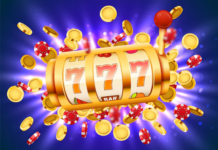Introduction
Pakistani Mujra is a traditional dance form that dates back to the Mughal era. It has deep roots in the culture and history of South Asia, specifically in the regions that now constitute modern-day Pakistan. Mujra is not just a dance performance but a complete art form that incorporates music, poetry, and various elements of traditional attire and jewelry. While Mujra has often been associated with sensuality and eroticism, it is essential to understand its cultural significance and historical context to appreciate its true essence.
Historical Origins of Mujra
Mujra originated in the royal courts of the Mughal Empire, where it was performed by courtesans known as tawaifs. These women were well-versed in classical music, dance, and poetry, and they entertained the nobility with their performances. Over time, Mujra evolved as a popular form of entertainment that spread beyond the confines of the royal court to become a significant part of South Asian culture.
Elements of Mujra
Mujra is a multifaceted art form that combines music, dance, and poetry to create a mesmerizing performance. Key elements of Mujra include:
1. Music: Traditional Mujra music is characterized by the use of instruments such as the tabla, sitar, and sarangi. The melodies are often based on classical ragas, creating a soothing and enchanting atmosphere.
2. Dance: Mujra dance is known for its graceful movements, intricate footwork, and expressive gestures. Dancers often wear ghungroos (ankle bells) that add a rhythmic element to their performance.
3. Poetry: Poetry plays a central role in Mujra, with dancers often reciting or singing verses during their performance. The poetry is typically romantic or devotional in nature and adds a layer of emotional depth to the dance.
4. Attire and Jewelry: Mujra dancers wear elaborate costumes, including flowing ghagras (skirts) and cholis (blouses), adorned with sequins, beads, and embroidery. They also wear traditional jewelry such as jhumkas (earrings) and maang tikkas (forehead ornaments) to enhance their appearance.
Sensuality in Mujra
While Mujra is known for its sensuality, it is essential to appreciate this aspect within the context of South Asian culture. In traditional South Asian societies, dance has long been a medium for expressing emotions, stories, and themes of love and devotion. The sensuality in Mujra is not gratuitous but rather a reflection of the depth of human emotions and the complexity of relationships.
Challenges and Misconceptions
Despite its cultural significance, Mujra has faced challenges and misconceptions in modern times. It has often been dismissed as vulgar or inappropriate, leading to its decline in mainstream popularity. However, efforts are being made to preserve and promote Mujra as an art form that deserves recognition and respect.
Contemporary Relevance
In recent years, there has been a renewed interest in Mujra as a cultural art form. Dance academies and cultural institutions are offering classes and workshops to educate people about the history and significance of Mujra. Additionally, contemporary dancers and performers are incorporating elements of Mujra into their work, blending tradition with innovation.
FAQs (Frequently Asked Questions)
1. What is the significance of Mujra in Pakistani culture?
Mujra holds a significant place in Pakistani culture as a traditional art form that combines music, dance, and poetry. It reflects the rich heritage and artistic traditions of the region.
2. Is Mujra only performed by women?
Historically, Mujra was performed by female courtesans known as tawaifs. However, in modern times, both male and female dancers participate in Mujra performances.
3. How is Mujra different from other dance forms?
Mujra is distinct from other dance forms due to its emphasis on poetry, music, and traditional attire. It is known for its graceful movements and expressive storytelling.
4. Is Mujra still popular in Pakistan today?
While Mujra has lost some of its popularity in mainstream culture, it continues to thrive in traditional and artistic circles. Efforts are being made to revive and preserve this cultural heritage.
5. What are some common themes in Mujra poetry?
Mujra poetry often explores themes of love, longing, nature, and devotion. Poets use rich imagery and metaphors to convey deep emotions and sentiments.
Conclusion
In conclusion, Pakistani Mujra is more than just a dance form—it is a cultural treasure that reflects the rich artistic heritage of South Asia. By understanding its historical origins, key elements, and cultural significance, we can appreciate Mujra as a nuanced and profound art form that continues to captivate audiences around the world. With efforts to preserve and promote Mujra, we can ensure that this traditional art form thrives for generations to come, serving as a bridge between the past and the present.








